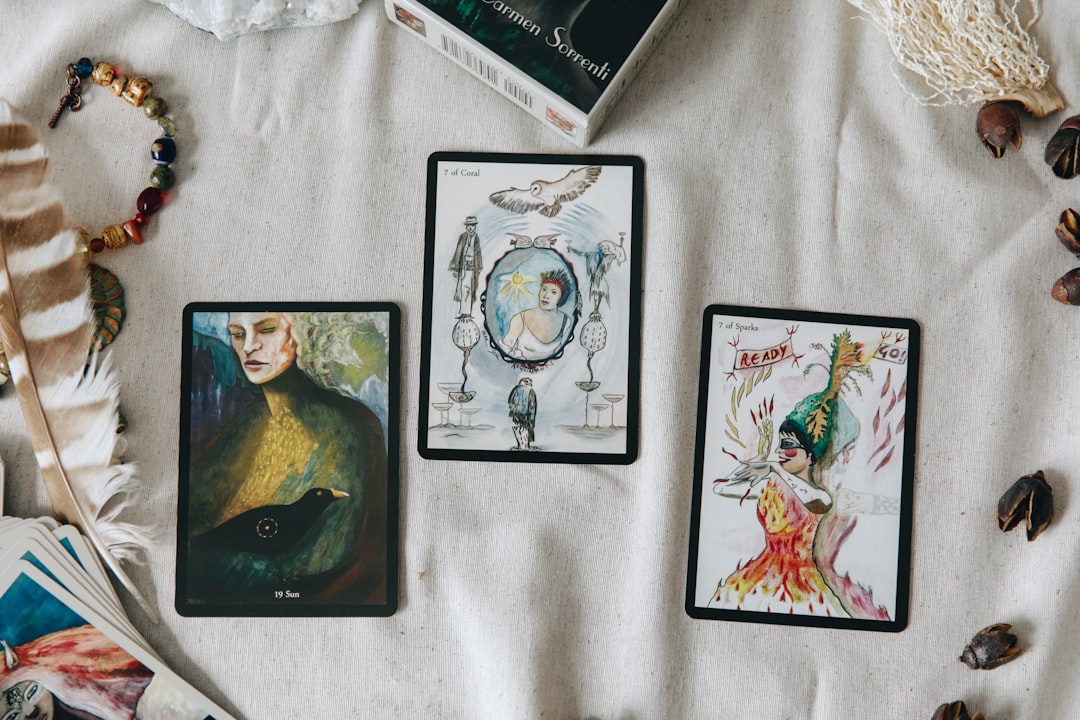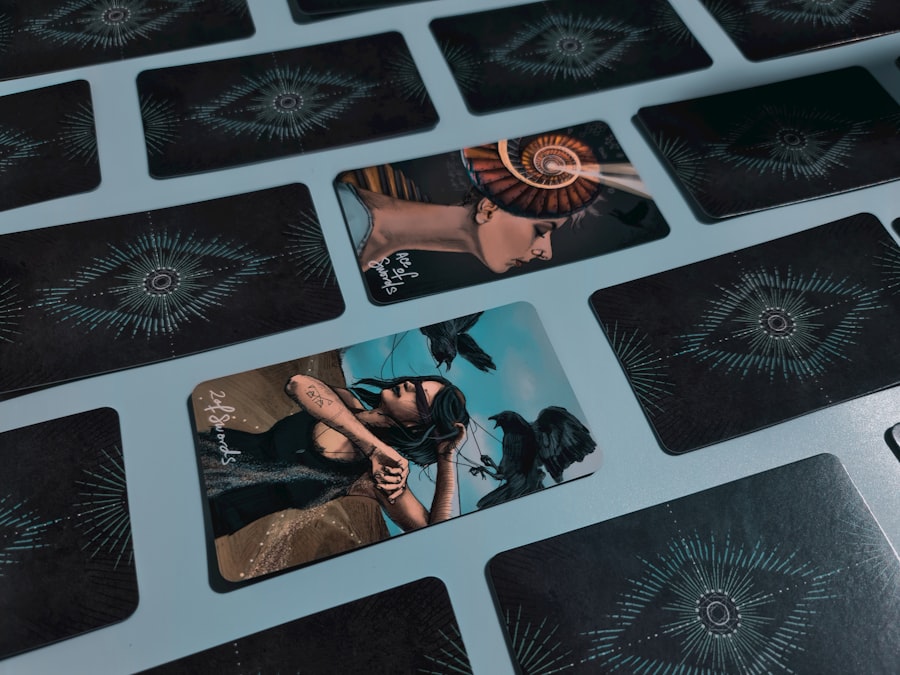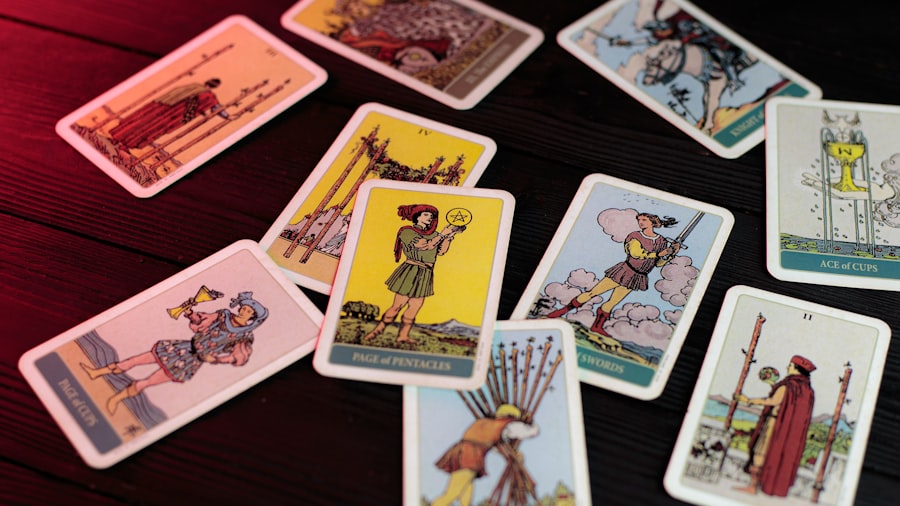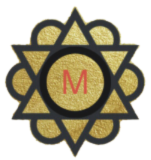
Tarot is a fascinating system of divination that has captivated individuals for centuries. At its core, a tarot deck consists of 78 cards, divided into two main categories: the Major Arcana and the Minor Arcana. The Major Arcana comprises 22 cards that represent significant life events, spiritual lessons, and archetypal themes.
Each card, from The Fool to The World, carries profound symbolism and meaning, often reflecting the journey of the human experience. The Minor Arcana, on the other hand, consists of 56 cards divided into four suits: Cups, Pentacles, Swords, and Wands. Each suit corresponds to different aspects of life—emotions, material matters, intellect, and creativity, respectively.
Understanding tarot requires more than just memorizing card meanings; it involves grasping the intricate relationships between the cards and how they interact within a spread. A tarot reading typically involves laying out a selection of cards in a specific pattern, known as a spread. The position of each card within the spread can alter its interpretation, adding layers of complexity to the reading.
For instance, a card representing conflict may take on a different meaning when placed in a position that signifies past influences compared to when it appears in a position indicating future outcomes. This dynamic interplay is what makes tarot a rich tool for insight and exploration.
Key Takeaways
- Tarot is a tool for self-reflection and empowerment, using a deck of cards with symbolic imagery to tap into intuition and gain insight.
- When choosing a tarot deck, consider the imagery, symbolism, and personal connection to find one that resonates with you.
- Setting intentions for your tarot practice can help focus your energy and guide your readings towards specific goals or areas of your life.
- Tarot can be used for self-reflection and empowerment, providing guidance and insight into personal challenges and opportunities for growth.
- Incorporating tarot into your daily routine can help you connect with your intuition and gain clarity on daily decisions, while building confidence in your readings over time.
Choosing the Right Tarot Deck for You
Selecting a tarot deck is a deeply personal endeavor that can significantly influence your tarot practice. With countless decks available, each with its unique artwork and thematic focus, finding one that resonates with you is essential. Some individuals are drawn to traditional decks like the Rider-Waite-Smith, known for its iconic imagery and straightforward symbolism.
Others may prefer more contemporary or themed decks that align with their personal interests or spiritual beliefs, such as decks inspired by mythology, nature, or pop culture. When choosing a deck, consider not only the artwork but also the accompanying guidebook. A well-written guidebook can provide valuable insights into the meanings of the cards and offer suggestions for spreads and interpretations.
Additionally, many decks come with unique interpretations that may differ from traditional meanings, allowing for a more personalized reading experience. It’s also beneficial to handle the cards physically; the texture and feel of the deck can impact your connection to it. Ultimately, the right tarot deck should evoke a sense of familiarity and comfort, inviting you to explore its depths.
Setting Intentions for Your Tarot Practice

Intentions serve as guiding principles in any tarot practice, shaping the focus and direction of your readings. Before engaging with your cards, take time to reflect on what you hope to achieve through your tarot practice.
Do you want to explore your inner self or gain insight into your relationships? By articulating your intentions, you create a framework that enhances your connection to the cards and deepens your understanding of their messages. Setting intentions can be as simple as stating your purpose aloud or writing it down in a journal dedicated to your tarot practice.
Some practitioners find it helpful to create a ritual around this process—lighting a candle, meditating briefly, or even performing a grounding exercise to center themselves before beginning a reading. This intentional approach not only fosters mindfulness but also cultivates an atmosphere conducive to receiving guidance from the cards. As you progress in your practice, revisiting and refining your intentions can lead to profound personal growth and transformation.
Using Tarot for Self-Reflection and Empowerment
Tarot is an exceptional tool for self-reflection, offering insights that can illuminate hidden aspects of our lives and psyche. When engaging with tarot for self-exploration, it’s essential to approach the cards with an open mind and heart. Each card can serve as a mirror, reflecting our thoughts, feelings, and behaviors back to us.
Similarly, The Lovers can encourage you to examine your relationships and the choices you make within them. Empowerment through tarot comes from recognizing that the cards do not dictate fate but rather provide guidance and perspective.
By interpreting the messages within the context of your life, you can gain clarity on challenges and opportunities ahead. This process fosters a sense of agency; rather than feeling like a passive participant in life’s events, you become an active creator of your own narrative. Engaging with tarot regularly can cultivate self-awareness and resilience, equipping you with tools to navigate life’s complexities with confidence.
Incorporating Tarot into Your Daily Routine
Integrating tarot into your daily routine can enhance your mindfulness and provide ongoing opportunities for reflection. One effective way to do this is by drawing a daily card each morning. This practice allows you to set an intention for the day based on the card’s message.
For instance, if you draw The Sun, you might focus on embracing positivity and joy throughout your day. Conversely, if you draw The Tower, it may prompt you to remain adaptable in the face of unexpected changes. In addition to daily draws, consider keeping a tarot journal where you document your readings and reflections.
This journal can serve as a valuable resource for tracking patterns over time and observing how your interpretations evolve. You might also explore themed spreads that align with specific goals or areas of focus in your life—such as career development or personal relationships—allowing for deeper exploration of those themes over time. By weaving tarot into your daily life in these ways, you create a consistent practice that nurtures growth and insight.
Building Confidence Through Tarot Readings

Confidence in conducting tarot readings often develops through practice and experience. As you become more familiar with the cards and their meanings, you’ll find that your intuition begins to guide you in interpreting their messages more fluidly. One effective way to build confidence is by reading for yourself regularly before offering readings to others.
This self-practice allows you to experiment with different spreads and interpretations without the pressure of external expectations. Additionally, consider joining tarot communities—whether online or in-person—where you can share experiences and insights with fellow practitioners. Engaging in discussions about card meanings or participating in group readings can provide valuable feedback and encouragement.
As you witness others’ interpretations and approaches to tarot, you’ll likely discover new perspectives that enrich your own practice. Over time, this collaborative learning environment fosters confidence not only in your readings but also in your ability to connect with others through this ancient art form. In conclusion, tarot is not merely a tool for divination; it is a multifaceted practice that encourages self-discovery and empowerment.
By understanding its basics, choosing the right deck, setting intentions, using it for self-reflection, incorporating it into daily life, and building confidence through practice, individuals can unlock the transformative potential of tarot in their lives. Each card holds a story waiting to be told—a narrative that invites us to explore our inner landscapes and navigate our journeys with greater awareness and intention.
If you are interested in learning more about the symbolism of tarot cards, you may want to check out The Meaning and Symbolism of the Tarot Card The Sun. This article delves into the significance of this powerful card and how it can impact your readings. Understanding the deeper meanings behind each card can help you gain a better understanding of yourself and boost your confidence when using tarot for guidance.
FAQs
What is Tarot?
Tarot is a form of divination that uses a deck of cards to gain insight into past, present, and future events. Each card in the deck holds symbolic meanings that can be interpreted by a reader.
How can Tarot boost confidence?
Tarot can boost confidence by providing guidance and insight into personal challenges and opportunities. It can help individuals gain a deeper understanding of themselves and their circumstances, leading to increased self-awareness and confidence.
Is Tarot a reliable tool for boosting confidence?
The effectiveness of Tarot in boosting confidence varies from person to person. Some individuals find that Tarot provides valuable insights and empowerment, while others may not resonate with its symbolism and interpretations.
How can I use Tarot to boost my confidence?
To use Tarot to boost confidence, you can start by selecting a Tarot deck that resonates with you. Then, you can use the cards to reflect on specific areas of your life where you seek guidance and empowerment. Through self-reflection and interpretation of the cards, you can gain a deeper understanding of your strengths and opportunities for growth.
Are there any risks associated with using Tarot for confidence boosting?
While Tarot can be a valuable tool for self-reflection and empowerment, it’s important to approach it with an open mind and a healthy dose of skepticism. Relying too heavily on Tarot for confidence boosting without considering other factors can lead to dependency and unrealistic expectations. It’s important to use Tarot as a complementary tool alongside other forms of self-improvement and personal development.






